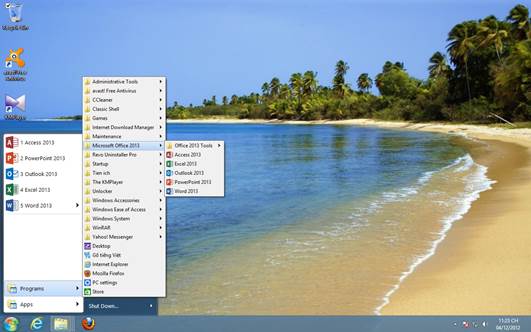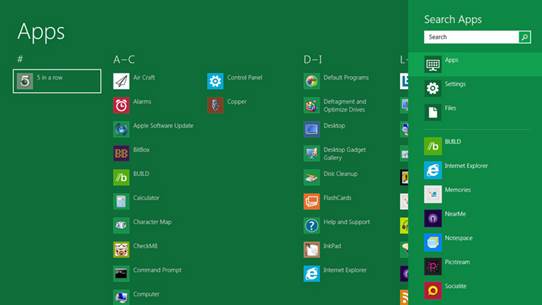Attitude
Perhaps Microsoft's biggest mistake wasn't
a failure of design philosophy or technical implementation but simply of
attitude. Windows has had radical redesigns before. Windows XP looked
completely different to its predecessor Windows 2000, and was mocked for it.
Windows Vista looked as different to Windows XP as it did from its predecessor.
But crucially, each update was built on the former. If you liked, you could
roll back the design choices and find yourself with something that looked and
acted more or less the way you wanted. Even in Windows 7, which boasted a
'completely new' taskbar, users could tweak the appearance and behavior into
something that approximated earlier versions.
The change between Windows 7 and Windows 8
was different. This time, Microsoft made a stand and chucked out the older
elements wholesale, effectively telling users 'It's our way, or the highway.'
The problem was people happily took the latter choice.

The
change between Windows 7 and Windows 8 was different
If it stuck it out in the long run, the
chances are that Microsoft could have its way, but in a world where people are
still using Windows XP a full 12 years since its initial release, Microsoft can
no longer simply wait for its users to come around to its way of thinking. Who
knows what the computing market will look like 12 years after Windows 7? By
completely missing the tablet explosion, Microsoft has already demonstrated
that it couldn't predict what the computing market will look like one year
after Windows 7 - a decade-plus is unthinkable.
While the possible return of the Start menu
and a more prominent desktop might make Windows Blue's alterations seem like a
climb-down, there are also things about it which indicate that Microsoft's
attitude isn't quite as humbled as that backtracking suggests.
For a start, a lot of the rumored changes
in Windows Blue are focused on the Metro side of the equation. Tweaks,
re-works, even the transition of certain elements from the old-style Ul to the
Metro interface. The shift towards a new Windows experience, which began with Windows
8, might not have been an instant success but, for whatever reason, Microsoft
still wants it.

Windows
8 interface
And herein lies the real point about
Windows 8: desktop users might not want it. Tablet users might not want it.
Even developers and retailers might not want it. Ultimately, though, Windows 8
isn't the operating system no one wants, because Microsoft still seems to want
it more than anything. If anything, Microsoft wants it a little too much,
because it wants it more than happy users, more than good press and much more
than the people at which it was aimed.
Is It Too Late?
It wasn't that long ago that the idea of a
computing ecosystem without Microsoft at its center was unthinkable. For all
the improvements in Linux and the increasing popularity of Apple hardware,
Windows had one thing going for it: it was familiar. In one fell swoop,
Microsoft has eliminated that benefit.
And this comes at the worst possible time
too. Microsoft-powered desktop computing is already in decline, if only because
of the greater number of options now available. Microsoft's share of web
traffic is at its lowest point in years.
The lifespan of desktop and notebook
systems is extending as people spend their luxury budget on mobile devices
instead. For better or worse, people don't need a new version of Windows right
now. They may not ever need one.

Whether
or not you want Windows 8, there are certainly some interesting times ahead for
it
There are things Microsoft could do to
change that, though. A cheap Windows 8 tablet along the lines of the Nexus 7 or
Kindle Fire HD would have the potential to put up a fight if released in time
for Christmas. A version of Windows 8 re-tailored for desktop would at least
give the impression that Microsoft is listening to consumer feedback, even if
it was purely a branding exercise. If anything, Windows 8's problem wasn't
being too late, it's that it was too early. Users aren't ready. The software
ecosystem wasn't ready. And the tablet hardware certainly wasn't ready.
We can't see any of this sinking Microsoft
alone - after all, the consumer arm of Windows is only a small portion of its
overall business - but there are undoubtedly some choppy waters to navigate
over the next few years that may leave Microsoft and Windows dramatically
changed by the time they emerge. Whether or not you want Windows 8, there are
certainly some interesting times ahead for it.